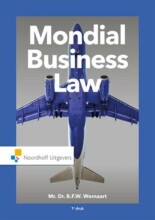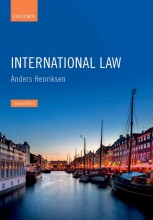Legality of the use of force
21 important questions on Legality of the use of force
By which principles is the classical self-defence governed?
Necessity: instant, overwhelming, leaving no choice of means, and no moment for deliberation. Need to distinguish between various attacks.
Proportionality: nothing unreasonable or excessive.
The Nicaragua case gives an definition of an armed attack in the context of self-defence (Art. 51 UN Charter).
Armed attack includes action by regular armed forces across an international border, and the sending by or on behalf of a State of armed bands, groups, irregulars or mercenaries, which carry out acts of armed force against another State of such gravity as to amount to an actual armed attack conducted by regular forces.
Armed attack is not assistance to rebels in the form of provision of weapons or logistical or other support.
What are the conditions under which collective self-defence is allowed?
- State should declare itself to have been attacked
- Victim State make a request to other States that they collectively come to its aid in self-defence
- Australia coming to aid to Iraq by way of collective self-defence against attacks by non-State actors located within Iraq
--> unable and unwilling?
- The exercise of collective self-defence against Iraq.
- Higher grades + faster learning
- Never study anything twice
- 100% sure, 100% understanding
What does the Court argues in the Nicaragua case in the context of humanitarian intervention?
What did Resolution A/RES/60/1 introduce in the context of humanitarian intervention with the use of force?
What are the three pillars on which the responsibility to protect rests on according to a report of the SC?
- The protection responsibilities of the State
- State in the first place has to protect population - International assistance and capacity-building
- If there is a failure to meet responsibility of pillar one, then pillar two outlines role of international community - Timely and decisive response
On which assumption did the doctrine of responsibility to protect arose in the 1990s?
The need for mutual support between states and a shared responsibility to protect populations from crimes of aggression and gross violations of human rights.
Sovereignty more seens as a responsibility towards the international community, which includes the obligation of state to preserve life-sustaining standards. -> legal basis
Describe the historical evolution of the limitations on the use of force/
Historically there was no limits on the use of force untill less than a 100 years ago. The State System was predicated on self-preservation. There was the Just War Doctrine; the outcome of a war ordained by the sovereign and with the will of God, if successful was, indeed a just war. Religious basis by which the Prince has been ordained.
End of 19th century States realise that the technology of war threatens the existence of States. Wars start to matter.
Self-preservation -> peaceful coexistence
Give the 3 first limitations on the use of force in the period between 1907-1928.
- 1907 Hague Peace Conference
- 1919 League of Nations
- Collective security arrangement (= attack against one is deemed to be an attack against all), as long as:
a. All States Agree
b. There was a 3 months cooling off period - 1928 Briand-Kellogg Pact
Article 2(4) UN Charter (pre-nuclear document) and the radical proposition
“All Members shall refrain in their international relations from the threat or use of force against the territorial integrity or political independence of any state, or in any other manner inconsistent with the Purposes of the United Nations”.
Prohibition on the unilateral use of force
- States agree to limit the use of force, instead of making only exceptions to the use of force. There are now only 3 possibilities where the use of force is allowed.
What are the 3 original exceptions to the use of force within the UN Charter?
- Against Enemy States if they renew aggression (dead-letter law)
- Charter was created by victors of the WWI with the idea if enemy powers wanted to lift their heads, then the UN could use violence.
- Now the enemy powers are members of the UN. Overwritten by custom. - Sanctioned by the UN Security Council
- Self-defence
What are the four crimes punishable under article 5 of ICC Statute?
- Genocide
- War crimes
- Crimes against humanity
- Crime of aggression
- only unilateral right to use force is to react on the use of force.
- illegal use of force should be seen as an act of aggression
What is the relation between art. 51 UN Charter and the inherent right of self-defence?
Article 51 UN Charter is about self-defence. You can protect yourself but if the SC seeks to take over, you have to give way.
The inherent right of self-defence does not flow from the Charter but is established under international customary law. However, also here States need to give way if asked. But the failure of the UN to effectively act does not preclude the inherent right to act in self-defence.
What are the limits of self-defence, which also classifies it as a circumstances precluding wrongfulness?
How can be concluded that a State is acting in self-defence or not?
The Security Council can determine whether a State was acting in self-defence or not. Not justified in the light of relevant circumstances or are not of suffcient gravity.
Article 39 UN Charter:
SC shall determine the existence of any threat to the peace, breach of the peace or act of aggression and shall make recommendations, or decide what measures shall be taken in accordance with the Articles 41 and 42, to maintain or restore international peace and security
What does article 53(1) articulates in relation to regional arrangements on the limitations of the use of force?
The regional arrangements fall under the umbrella of the UN system. The regional entities do not have the ability to act outside of the Charter.
What is the only basis for which the SC can justify the use of force under the Charter?
To maintain or ensure international peace and security.
UN is a collective security system which palces the recourse to force in the hands of the collectivity that an attack against one is an attack against all.
The SC doesn't have to react but can also be pro active/where there is a consideration.
What was the role of Libya in the expansion of the threats to peace by the SC?
The failure of Libya to hand over 2 individuals was consituted to be a threat of the peace. This went beyond the Charter, and thus no State practice and opinio juris. What was the response of States to this new creation of norm?
Since then, especially after 9/11, terrorism has become the fundamental threat to peace and security. What could have been a violation is now new custom
What are the two different actions under Chapter VII UN Charter?
Article 41 allows for measure short of force: sanctions (embargo)
Article 42 allows for recourse to the use of force: measures in article 41 inadequate
How to recognize when the SC allows the use of force in resolutions?
- Makes a determination under art. 39
- Mentions the action it is taking under Chapter VII
- Invokes the trigger: 'all means necessary'
- Designates who will undertake the action
Name 4 ways in which States have tried to expand the use of force, but failed because the opinio juris was not backed by State practice.
- Rescue citizens abroad (Entebbe Raid)
- Humanitarian intervention (R2P)
- Pre-emptive self-defence (Bush doctrine)
- To stp the use of chemical weapons
The question on the page originate from the summary of the following study material:
- A unique study and practice tool
- Never study anything twice again
- Get the grades you hope for
- 100% sure, 100% understanding





























